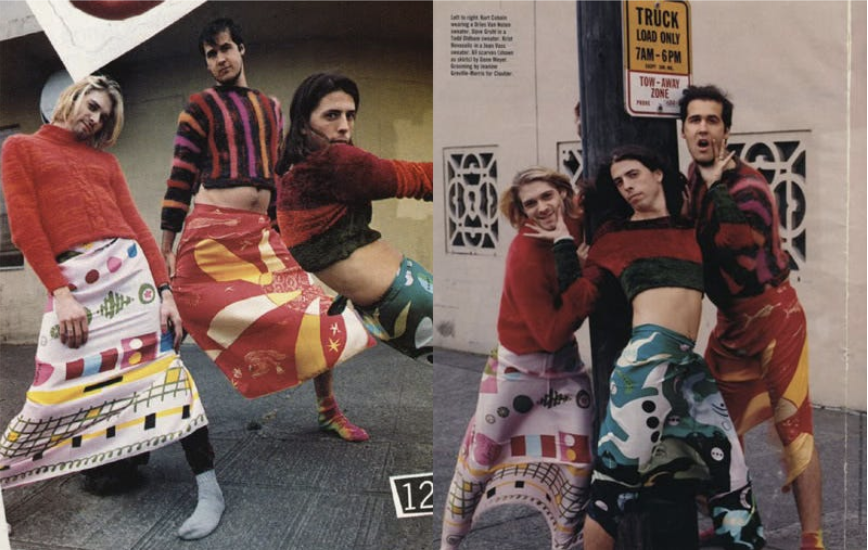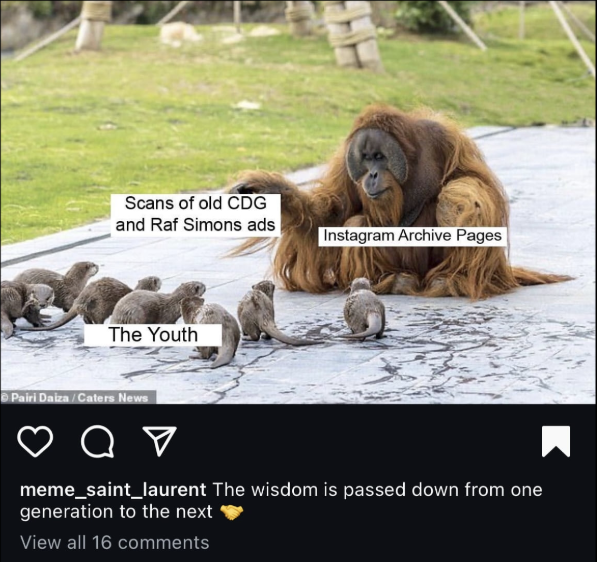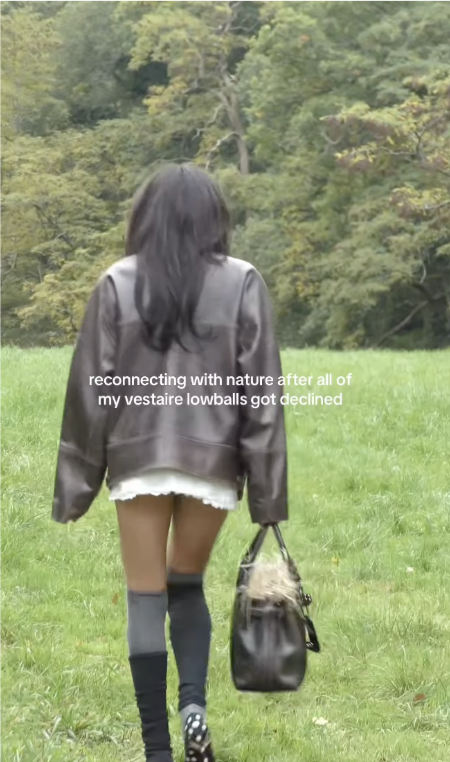
What used to be the territory of car-boot diehards and charity shop hunters has evolved into one of the most powerful movements in global fashion. As we recently covered, vintage is the new luxury. In 2023, sales of pre-owned clothing rose 18% to hit $197 billion, with forecasts suggesting the market could reach $367 billion by 2029. By the end of the decade, resale could be twice the size of fast fashion.
The drivers are many – fading stigma, economic precarity, a growing emphasis on personal style, sustainability – but the real revolution is technological. Since the late 1990s, platforms like eBay, Etsy, Depop, Grailed, Vinted and Vestiaire Collective have turned resale into a social and cultural infrastructure: a place where wardrobes become liquid assets, personal taste becomes public content and the past becomes infinitely searchable.
Despite their scale and reach, resale platforms remain curiously underexamined. More than marketplaces, they’re mirrors reflecting contemporary culture – spaces where capital, identity and desire converge.
Here are 10 reflections on what resale platforms reveal about how we live, shop and express ourselves today:
1) From Grunge to Grailed
In From Goodwill to Grunge, Jennifer Le Zotte charts how secondhand fashion evolved from a marker of poverty or moral virtue into a vehicle for self-expression and style. Once dismissed as marginal, buying used clothes became a statement of individuality, mirroring broader shifts in class, gender and consumer identity.
The rise of platforms like eBay, Depop, Vinted and Grailed has pushed secondhand fashion from the fringes to the mainstream, turning resale from a countercultural gesture into a mass, networked economy. Today, these platforms operate much like social media – ubiquitous, addictive and woven into the fabric of everyday life.

2) Archive Fever
Fashion is moving faster than ever, yet somehow feels trapped in a loop of self-reference. On the red carpet, déjà vu has become a dress code. In 2022, Kim Kardashian stepped into Marilyn Monroe’s “Happy Birthday, Mr. President” gown; at the 2024 MTV Music Awards, Sabrina Carpenter wore the same sequinned Bob Mackie dress Madonna debuted at the 1991 Oscars; and at the VMAs, Tate McRae channelled Britney Spears in a black lace Roberto Cavalli mini almost identical to her 2001 look.
Fashion brands are doing the same, mining their early-2000s archives for familiar hits — Balenciaga’s City Bag, Dior’s Saddle, Chloé’s Paddington — all recently revived. Fashion’s relationship with the past is inherently recursive, and resale platforms now sit at the centre of that loop.


3) Frugal Chic
“Frugal chic” started as a financial trend – coined by model-turned-financial advisor Mia Rose McGrath, who saved £95,000 by the age of 24 while living on eggs and bread – but it’s since evolved into a new fashion mindset. At its core is the idea that restraint can be aspirational: it’s not just about saving money, but signalling discernment. Suddenly, it’s a flex to say your whole outfit came from Vinted. As Amy Francombe, contributing editor at Vogue Business, put it:
“An outfit is instantly cooler if you paid less than you were supposed to for it. I don’t just care about what you’re wearing – tell me where you found it and how much of a bargain it was!”

4) The Cult of Collecting
Resale platforms have organised – and arguably created – a new class of collectors. Climax Books, for example, curates rare ephemera, erotica, and countercultural periodicals for a generation raised on eBay. As founder Isabella Burley told The Gentlewoman recently, she’s “part of the eBay generation that just loves trawling online for finds.”
Burley also wrote the foreword for the reissue of Kyoichi Tsuzuki’s cult book Happy Victims, which documents obsessive fashion collectors in cramped Tokyo apartments: a Buddhist monk with a Comme des Garçons habit, an Alexander McQueen acolyte with an extensive archive, an ardent Anna Sui devotee. Tsuzuki’s portraits reveal a parallel fashion universe, one less about spectacle and more about passion, devotion, and the quiet thrill of collecting.

5) Digital Beachcombing
Online shopping today is hyper-optimised. Often, it’s efficient but sterile. Resale reintroduces friction, awakening something primal: the hunt. In a Wired magazine essay from 1999, science-fiction writer (and self-described “eBay addict”) William Gibson called eBay “the main driving force in the tidying of the world’s attic,” describing the experience of scrolling through its vast inventory as “a lot like beachcombing … something ruminative, but with an underlying acuity, as though some old hunter-gatherer module were activated.”
Shopping on Depop or Vinted today evokes the same sensation – less like shopping, more like sifting through the sediment of our collective memory. Each listing is a relic, a fragment of someone’s past life, waiting to be rediscovered.
6) Nostalgia Machines
Resale platforms are the ultimate nostalgia machines, fuelling and feeding our obsession with the past. On a symbolic level, their inventories are inherently nostalgic, populated by items imbued with historical aura through prior ownership. As Byung-Chul Han argues in Non-Things: Upheaval in the Lifeworld, in a culture saturated with immaterial “non-things,” such artefacts acquire heightened symbolic weight, their material presence anchoring users in histories and meanings otherwise absent from digital life.
On a technical level, nostalgia is baked into the platforms’ infrastructure: the algorithms that curate feeds are trained on archives of past images and consumption data. Like social media, resale platforms are designed to be addictive — the more you engage, the more they learn about you, and the more they serve up the things you didn’t know you wanted. As Grafton Tanner observes in The Circle of the Snake: Nostalgia and Utopia in the Age of Big Tech, nostalgia is not only expressed by users but recuperated by platforms themselves. Listings become simultaneously products and posts, aestheticised as archive yet experienced as feed.
7) Art Meets Commerce
Resale platforms have always been more than marketplaces – they’re arenas for experimentation, where commerce and creativity blur. In the late 1990s, artist John Freyer gained notoriety by auctioning everything he owned on eBay, starting each item at 99 cents. His project, All My Life for Sale, was an experiment in self-dissolution through consumption, probing how identity and value circulate online. Around the same time, Keith Obadike’s Blackness for Sale listed his own racial identity on eBay, a pointed, satirical intervention into the commodification of race, labour and selfhood in digital economies.
8) Influence Meets Inventory
In the economy Ana Andjelic calls the business of aspiration, influence and inventory have become inseparable. Resale platforms operate as a form of social commerce, making shopping participatory: a way to perform taste, signal belonging, and curate identity in public.
Influence circulates through networks of buyers, sellers and algorithms that feed off one another. Sellers act as storytellers, crafting micro-worlds around their products; buyers participate as co-curators, validating or remixing those worlds through consumption and styling. The result is a flywheel where culture drives commerce, and commerce, in turn, shapes culture.
9) The Curatorial Impulse
Resale platforms have helped shift the way fashion is seen and shown. As Roisin Hurley Hirschkop observes, the culture around these platforms has coincided with the rise of a fashion language that treats clothing like museum artefacts. Digital stores and archive Instagram accounts are curated with museum-like precision. Garments are flattened into meticulous flat-lays and contextualised with runway shots and magazine scans. “Research” has become currency, clothing has become specimen and displaying designer pieces from past collections with archival reverence has become a key part of our online visual vernacular.

10) DM Drama
The vintage fashion community was once built on physical rituals – early mornings at flea markets, hours spent rummaging through racks. Resale platforms have translated those rituals into digital ones. What was once hidden in a charity shop backroom is now searchable from a phone screen.
But new forms of participation have emerged: a shared lexicon (“digging” and “hunting” for “archive grails”), performative online content (thrift hauls, unboxing videos) and memes that parody the ecosystem itself.
With its 500,000-plus Instagram followers, DM Drama chronicles the absurdities of online thrift – from accidentally purchasing a bralette for £12,000 to postmen spitting in parcels. It’s the digital gossip column of resale culture, capturing its humour, pettiness and pathos. If charity shops once revealed the detritus of other people’s lives, DM Drama exposes the messier afterlife of those transactions – the chaotic socialities of secondhand style.

| SEED | #8366 |
|---|---|
| DATE | 13.11.25 |
| PLANTED BY | JOANNA LOWRY |


